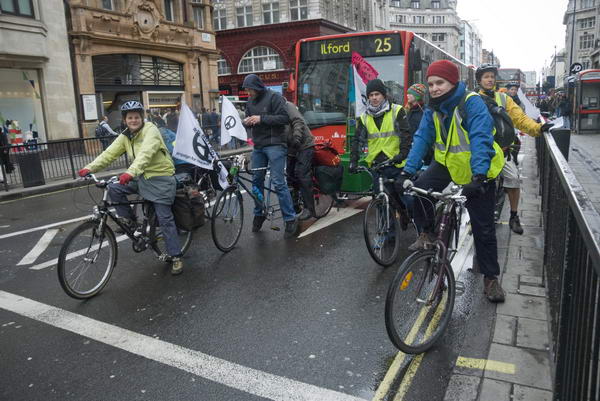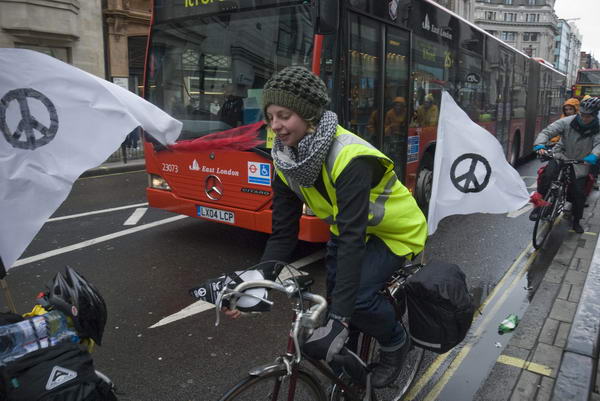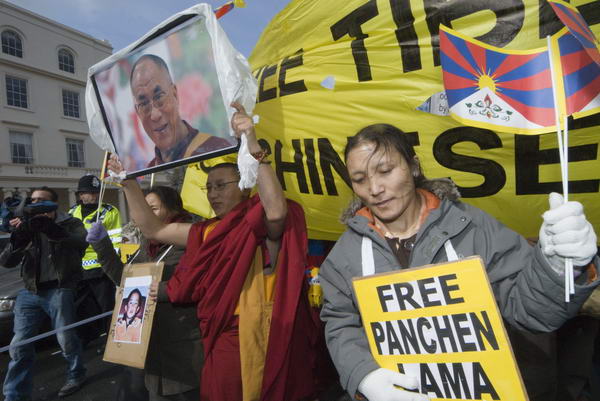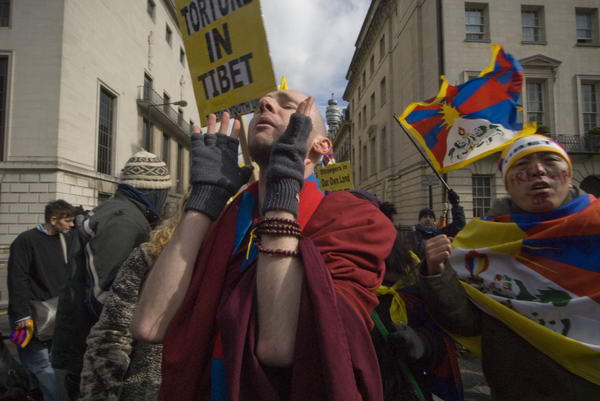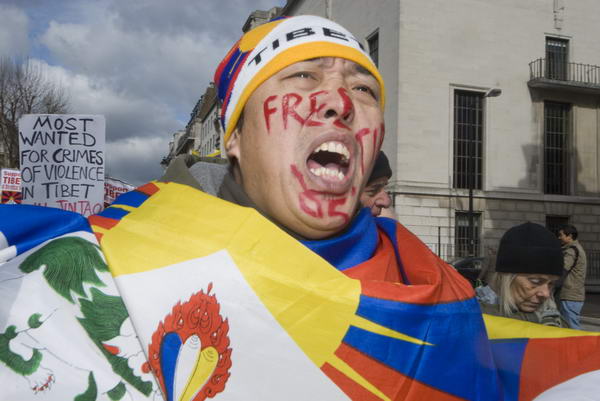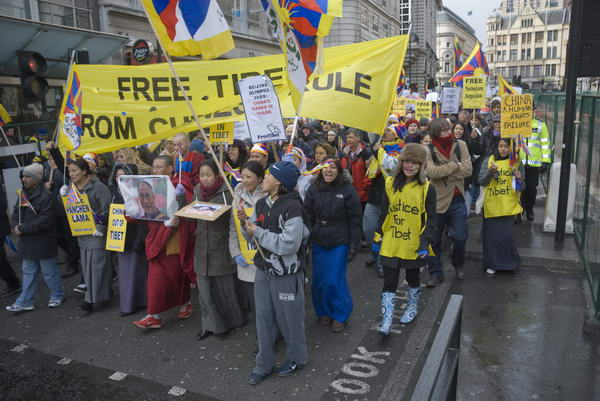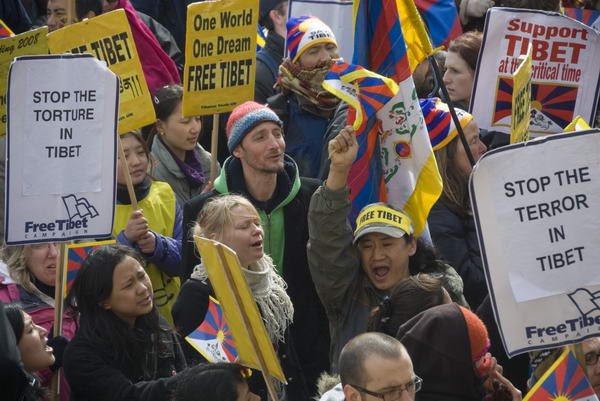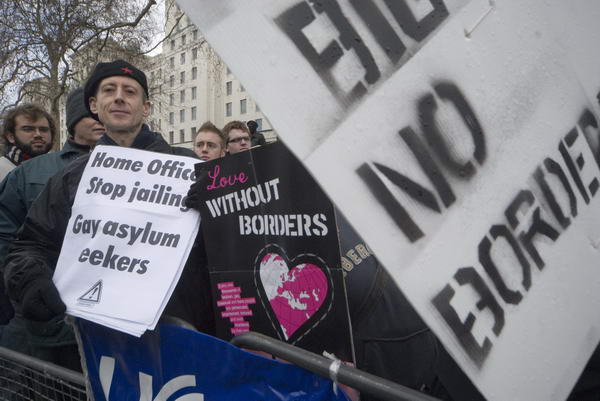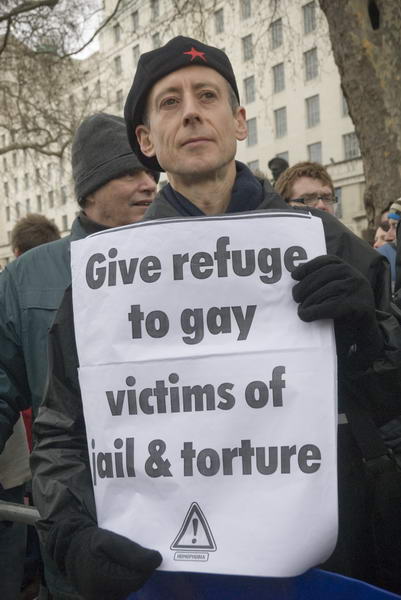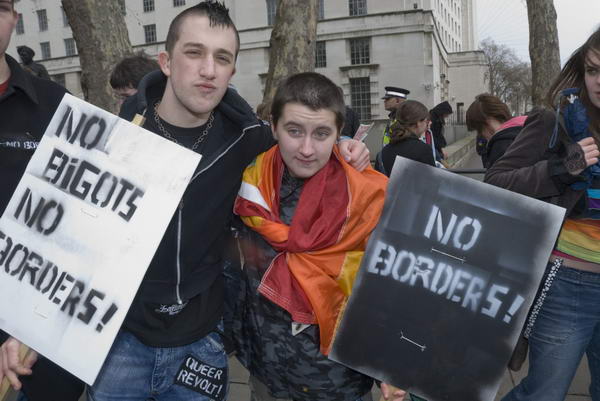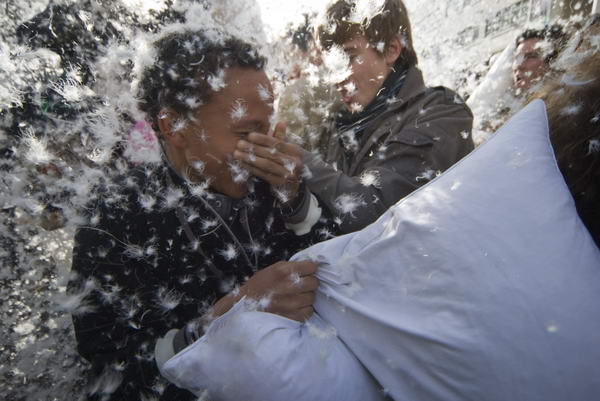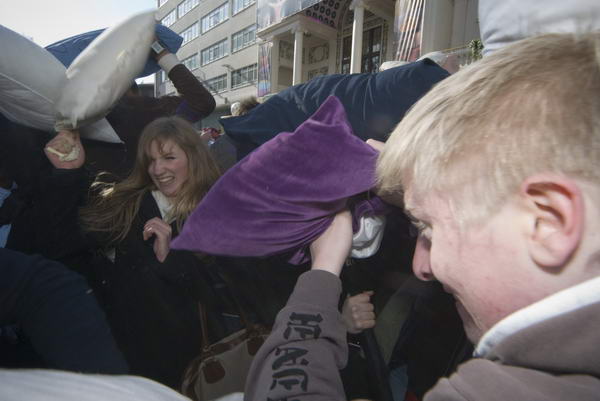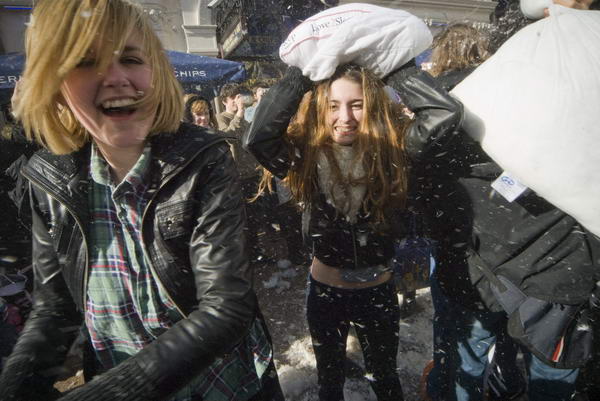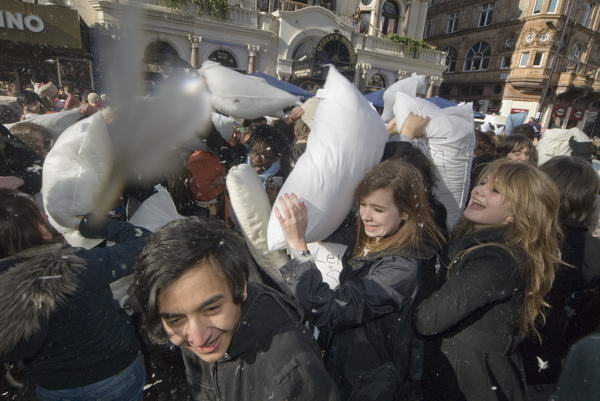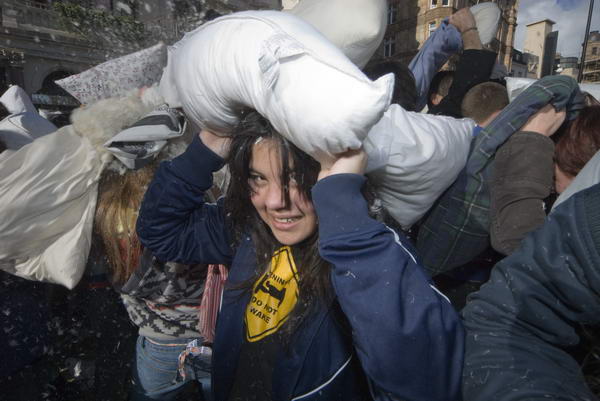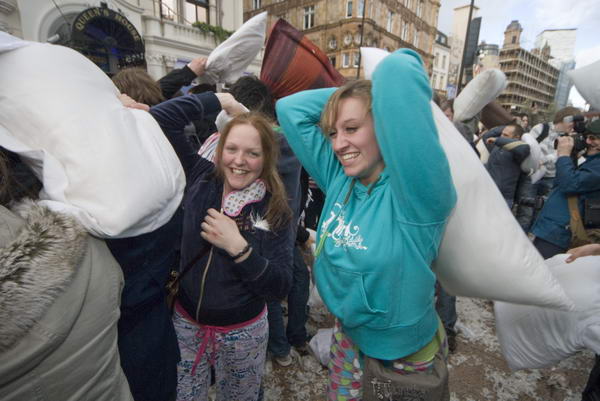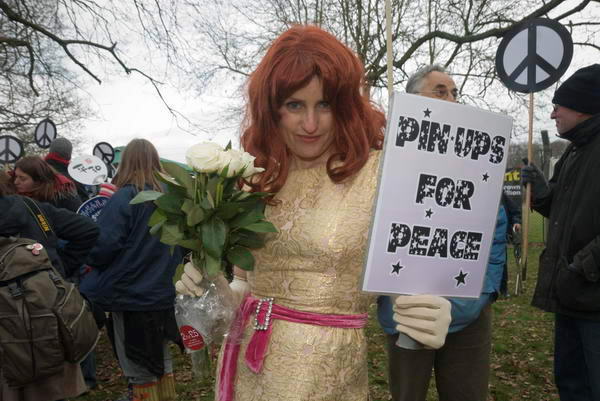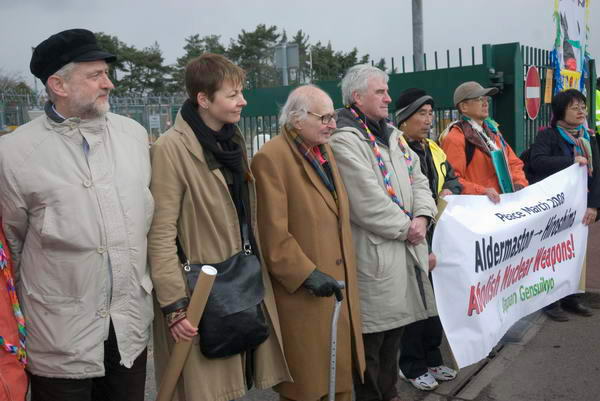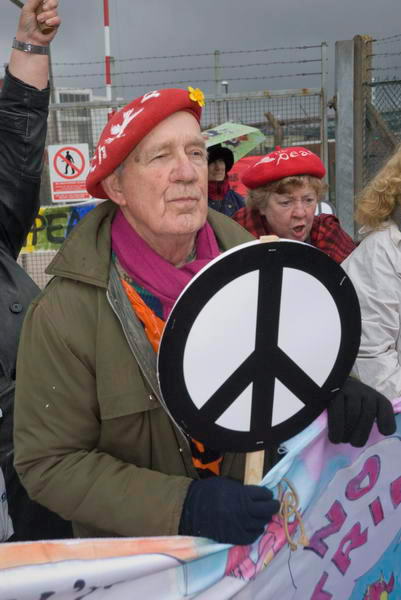Aldermaston 2008: Searching for what to write today I came to my post about my journey to Aldermaston, where the huge 750 acre Atomic Weapons Establishment is the UK’s main site for nuclear weapons research, design and manufacture. It was to here that people marched from London over 4 days at Easter1958 in a pivotal event in the anti-nuclear movement organized by the Direct Action Committee Against Nuclear War (DAC) and supported by the newly formed Campaign for Nuclear Disarmament (CND) – which took over the organisation of further marches.
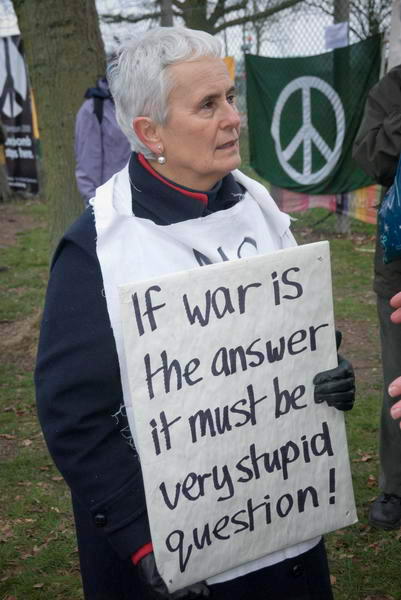
The CND leaflet in 1958 gave the reason for marching:
“MARCH TO ALDERMASTON
WHY?
BECAUSE we must show our opposition to the Testing, Storing and Manufacture of the H-Bomb in Britain.
If we make no protest now we have given our consent to its use.
“All who are opposed on any ground to Nuclear Weapons, whether possessed by the British, American or Russian Governments, are welcome.”
I didn’t go on that march as my parents thought I was too young, but both my older brothers marched. 50 years later at Easter 2008 I decided to take part in CND’s 50th anniversary event.
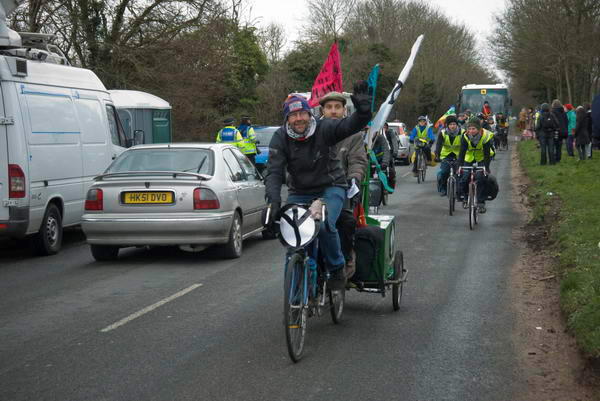
I had decided not to march but to cycle at least part of the way from London to Aldermaston with Bikes Not Bombs, but for various reasons (sloth, other events, lousy weather and a dislike of early rising) it didn’t happen, although I did manage to photograph the riders on Oxford Street, where they were going in exactly the wrong direction.
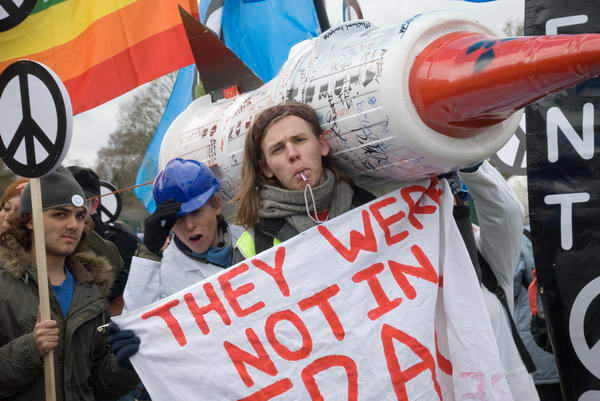
In the end I did ride from Reading to Aldermaston (and back) on Monday, but started an hour or two later than the organised ride, taking a more direct route at a faster pace and arriving before them. Here I’ll copy what I wrote on My London Diary in 2008 with a couple of minor corrections and post a few of the pictures with a link to many more on My London Diary.
Aldermaston – 50 years
Monday 24 March, 2008
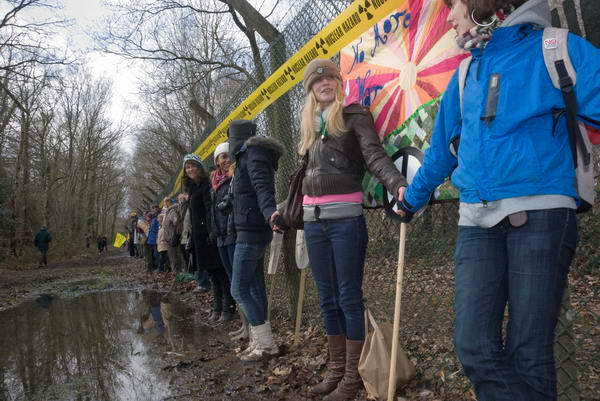
Monday I got up too late to join the Bikes Not Bombs cyclists on their way from Reading, where I arrived by train. The train that goes from Staines to Reading is so so slow I’m convinced there is still a man with a red flag walking in front of it much of the way, and the 20 or so miles took almost an hour.
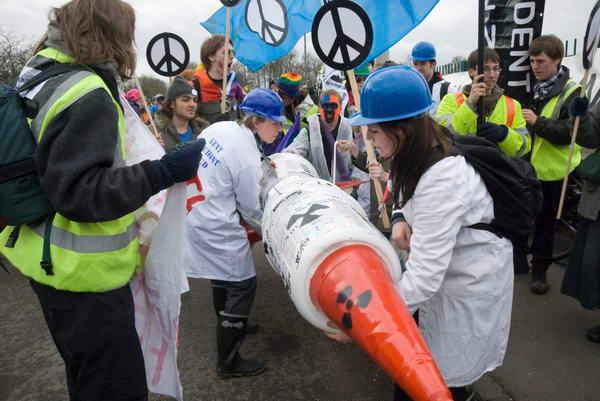
I took exactly the same route from Reading that I’d walked with Pat Arrowsmith and the other Aldermaston marchers in the 2004 march. Although a cool day, it was a pleasant morning for riding and I was quite enjoying it until a stretch of road called ‘Hermit’s Hill’ reminded me how out of practice I was at cycling. I can’t remember when I last had to push my bike up a hill, although in 2002 when my arteries were almost fully clogged with cholesterol I did once have to stop and rest in Normandy. Fortunately it turned out to be the only significant hill on the route.
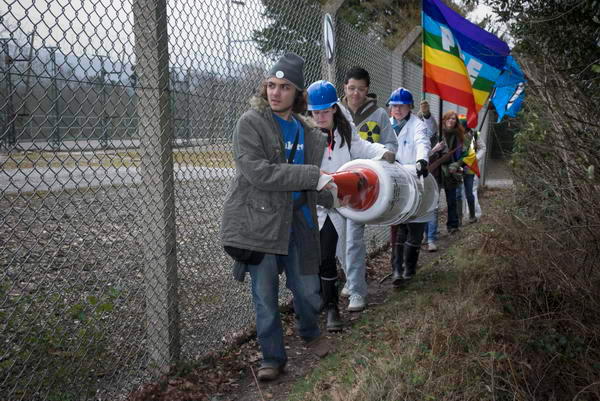
I went first to the main gate and joined the other photographers who were there, and took a few pictures of people arriving, including the 30 or so cyclists who I had beaten there. I walked down with some of the other photographers to the Falcon gate, but not a lot was happening there.
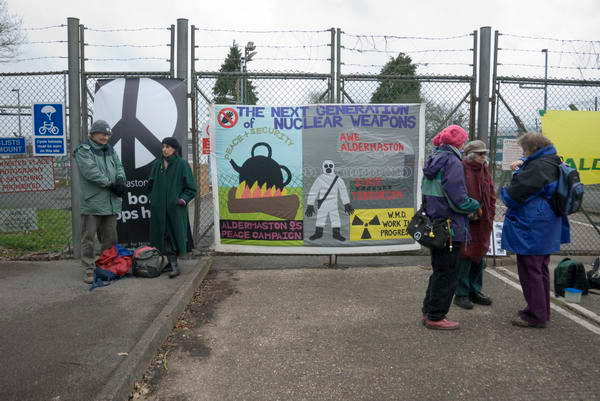
Later I took a ride around perimeter, or at least the part of it which is on roads – the northern side is simply a footpath, and it was rather muddy and full of demonstrators, so I didn’t try to ride along it. I caught up with the cyclists again at the Boiler House gate where I stopped to take some pictures, as quite a lot seemed to be happening there.
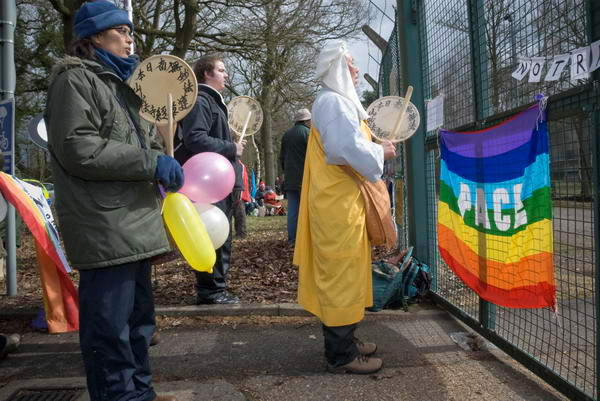
They left before I had taken all the pictures that I wanted, and got a few minutes start on me, before I pedalled off in pursuit. The road leads down and through the actual village of Aldermaston (rich home counties, rather too tidy), but what goes down has to come up, and I found myself struggling uphill again through the queue of traffic held up by the ‘bikes not bombs’ group and their police escort of two cars and several motorbikes.

The Construction gate at the top of the hill had a Welsh socialist choir, and I took a few pictures before I saw the cyclists coming up again – they had stopped to regroup a little down the road. Further along the fence, near the Home Office Gate was another largish group of people and a veteran from 1958 was talking.

The incredible Rinky-Dink mobile cycle-powered sound system was also there – another reminder of 2004 when it accompanied us as we marched down the lanes to the base.

People were now beginning to link hands around the base, although the organisers had talked about one person every 5 metres. Most of it seemed to be surrounded considerably more densely than this, although there were some gaps.

Back at the main gate there was an opportunity to photograph some of the speakers who were touring the event, although I didn’t actually hear them speak. They included two labour MPs, Jeremy Corbyn and John McDonnell, Green MEP Caroline Lucas, veteran Labour Party member Walter Wolfgang and several guests from Japan, one of whom was a survivor from Hiroshima.

After that people started to go home, and after a short but rather heavy shower I decided it was time to get on my bike too.
Many more pictures from the event at Aldermaston – 50 years, and I also took a few on my ride back to Reading Station.
Flickr – Facebook – My London Diary – Hull Photos – Lea Valley – Paris
London’s Industrial Heritage – London Photos
All photographs on this page are copyright © Peter Marshall.
Contact me to buy prints or licence to reproduce.
